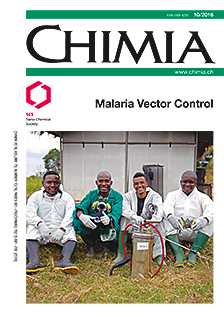Nucleotide and Nucleotide Sugar Analysis in Cell Extracts by Capillary Electrophoresis
FH-HES Universities of Applied Sciences
DOI:
https://doi.org/10.2533/chimia.2016.732Keywords:
Capillary electrophoresis, Cell extracts, Direct detection, Nucleotide, Nucleotide sugarAbstract
In biotechnological processes the intracellular level of nucleotides and nucleotide sugars have a direct impact on the post-translational modification (glycosylation) of the therapeutic protein products and on the exopolysaccharide pattern of the cells. Thus, they are precursors and also key components in the production of glycoproteins and glycolipids. All four nucleotides (at different phosphorylation stages) and their natural sugar derivatives coexist in biological samples. Their relative ratios depend on the actual conditions under which the cells are grown. Therefore, their simultaneous determination at different time points and different cell culture conditions in biotechnological samples is of interest in order to develop the optimal cell culture process. In our study capillary electrophoresis (CE) combined with UV detection @ 260 nm was selected for the separation and quantification of the complex nucleotide mixture of the structurally very similar nucleotides and nucleotide sugars in cell extracts. The high separation efficiency of CE as well as its insensitivity to the complex cell matrix makes this method superior to commonly used HPLC methods. In our study eleven nucleotides and six nucleotide sugars were analyzed. A robust and reproducible analysis system was developed. As background electrolyte borate (40 mM, pH 9.5) was used containing 1% PEG (MW 35'000 Da) which enhanced resolution. In order to obtain high reproducibility in terms of migration time, mandatory for the unambiguous identification of the single compounds in the complex cell extract mixtures, dynamic coating was also employed. The method was tested for CHO cell extracts where three sugar nucleotides and seven nucleotides were identified and quantified using GDP-Glc as internal standard.Downloads
Published
2016-10-26
Issue
Section
Columns, Conference Reports
Categories
License
Copyright (c) 2016 Swiss Chemical Society

This work is licensed under a Creative Commons Attribution-NonCommercial 4.0 International License.
How to Cite
[1]
Chimia 2016, 70, 732, DOI: 10.2533/chimia.2016.732.







